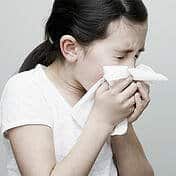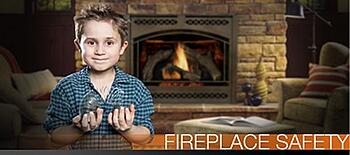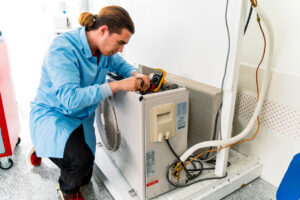If you share your home with children or are preparing to welcome a new child into your home for the first time, it is important to create a safe environment for little ones to live in.
Each stage of a child’s life may bring different safety challenges and concerns to parents or caregivers, and understanding the different steps that you can take to create a safe environment for children throughout their lives is important.
Preparing for a Newborn

Many people will initially consider home safety for kids while expecting their first child or preparing to welcome another child into their home. While newborns may generally be rather immobile and require your assistance for care almost around the clock, the fact is that there are safety concerns in place when caring for a newborn.
For example, parents are often sleep-deprived for the first few days, weeks or even months of a young child’s life, and they may be fumbling around in the dark to provide care for the child at night. Reviewing the home for tripping hazards and installing dim nightlights in various rooms throughout the home can be beneficial.
Parents-to-be can also inspect the home for cleanliness. A young infant’s immune system is generally not as developed as the immune system of an older child, so taking steps to remove bacteria, mold or other particulates from the home can be beneficial.
Parents-to-be can also spend time making their environment and home life easier for those critical first few weeks of a child’s life when they are still transitioning into their new role as parents. For example, ensuring that all baby supplies are on-hand, preparing frozen meals for convenience before the child’s birth and other related steps can be taken.
- As Your Baby Gets Older
While infants may be immobile and rely on parents for almost all of their needs when they are very young, they do grow and develop at a rapid pace. Some infants will be attempting to grasp for objects and rolling over within a few weeks or months of their birth. They will become increasingly mobile, and many will be crawling or even walking before their first birthday.
Many accidents involving babies occur because young children are increasingly mobile and curious about the world around them. They may place things into their mouths that are poisonous or that can cause them to choke. They may attempt to pull themselves up with unstable objects that can fall onto them, reach for hot objects that cause burns and more.
Some parents will baby proof their home to prepare for this stage of development before the baby is born, but others will wait to take these steps until they begin to see that their baby is becoming more mobile and active. Parents can create a safe environment in their home during this stage of a child’s life by inspecting the home carefully for sharp edges and corners on furnishings, installing safety devices in electrical outlets, securing cords and curtain strings and removing un-stationary or insecure items that may topple over or move with ease. Babies will want to continue to explore the world around them, and it is up to parents or caregivers to provide them with a safe environment to do so.
- In the Kitchen
Babies and toddlers may spend a considerable amount of time in the kitchen. As a parent, you may be in the kitchen preparing meals and snacks or cleaning periodically during the day, and your child may be by your side. The kitchen can be a dangerous place for children, so parents will want to be extra vigilant about this area of the home.
Cabinets and drawers in a typical kitchen may be filled with dangerous options that range from deadly household cleaning products to sharp knives and blades. Installing safety latches on cabinets and drawers is advisable, but consider keeping one or two cabinets available for your child to access. For example, some parents will leave the cabinets that contain Tupperware or pots and pans open so that kids can explore these safe areas and entertain themselves while a caregiver prepares meals.
Safety devices can also be installed on the stove and oven to prevent kids from reaching up to the oven and opening the door while it is turned on. A guard can be placed over the edge of the stove to prevent kids from burning themselves with hot pots and pans.
Keep in mind that young kids can be resourceful, and they may quickly learn that they can push chairs or steps tools to the edge of the counter. Therefore, even the surfaces of counters should be kept free of dangerous items when they are not in use. You may also consider keeping electrical devices like coffee pots, toasters and more unplugged when not in use so that kids do not unintentionally become injured by unsafe use of these devices.
In the Bathroom
The bathroom can also be a dangerous place for young children. The cabinets in a home’s bathrooms should be secured with similar devices that are used in the

kitchen. Guards or latches can also be installed on the toilet. This can prevent young kids from playing in a dirty toilet and being exposed to germs unnecessarily, and it can also prevent them from having their fingers or head smashed by a falling toilet lid.
Bathtub safety should be reviewed as well. Some of the most common injuries in the bathroom for kids relate to accidental drowning as well as to burns from scalding water. As a rule of thumb, parents should not leave a child unattended in the bathroom when the water is on or when there is water found in the bathtub. Children can drown in just a few inches of water. Furthermore, they should not walk away from the tub when the hot water is running even if their child is not yet in the bathtub.
Electrical appliances in this room, such as hair dryers and curling irons, should be used with care and should be stored in an elevated position where children cannot reach them when they are not in use.
Importance of Vigilance
Baby proofing your home can help you to create a safe environment for your children regardless of their age. However, it is important to note that a home is a functional place, and the environment is constantly changing as you and your family members move around from room to room. For example, an older child may have dropped a grape or penny on the floor or a house guest may have opened the blinds and left the cord dangling within arm’s reach of a baby.
Even when a home has been baby proofed, parents and caregivers should constantly scan the environment for potential hazards. They should also be aware of their child’s changing abilities with development and take steps to regularly secure the environment as their child grows.
- Using Products Safely

Each year, more baby products are placed on a recall list because they are deemed to be unsafe for kids to use. Unfortunately, many of these products are recalled after babies or children have already been injured or killed with their use.
As a parent or caregiver, it is important to inspect all products that your kids use. This may include high chairs, cribs, strollers and various other items. Pay attention to factors like stability, possible choking or pinching hazards and other factors that may result in injury to the child. When buying used baby products, ensure that the product was not previously recalled due to safety concers.
Visit here Nice Heating and Air for our professional HVAC services.
 SEE OUR SPECIALS
SEE OUR SPECIALS SCHEDULE SERVICE
SCHEDULE SERVICE





 Call 703-884-2376
Call 703-884-2376


